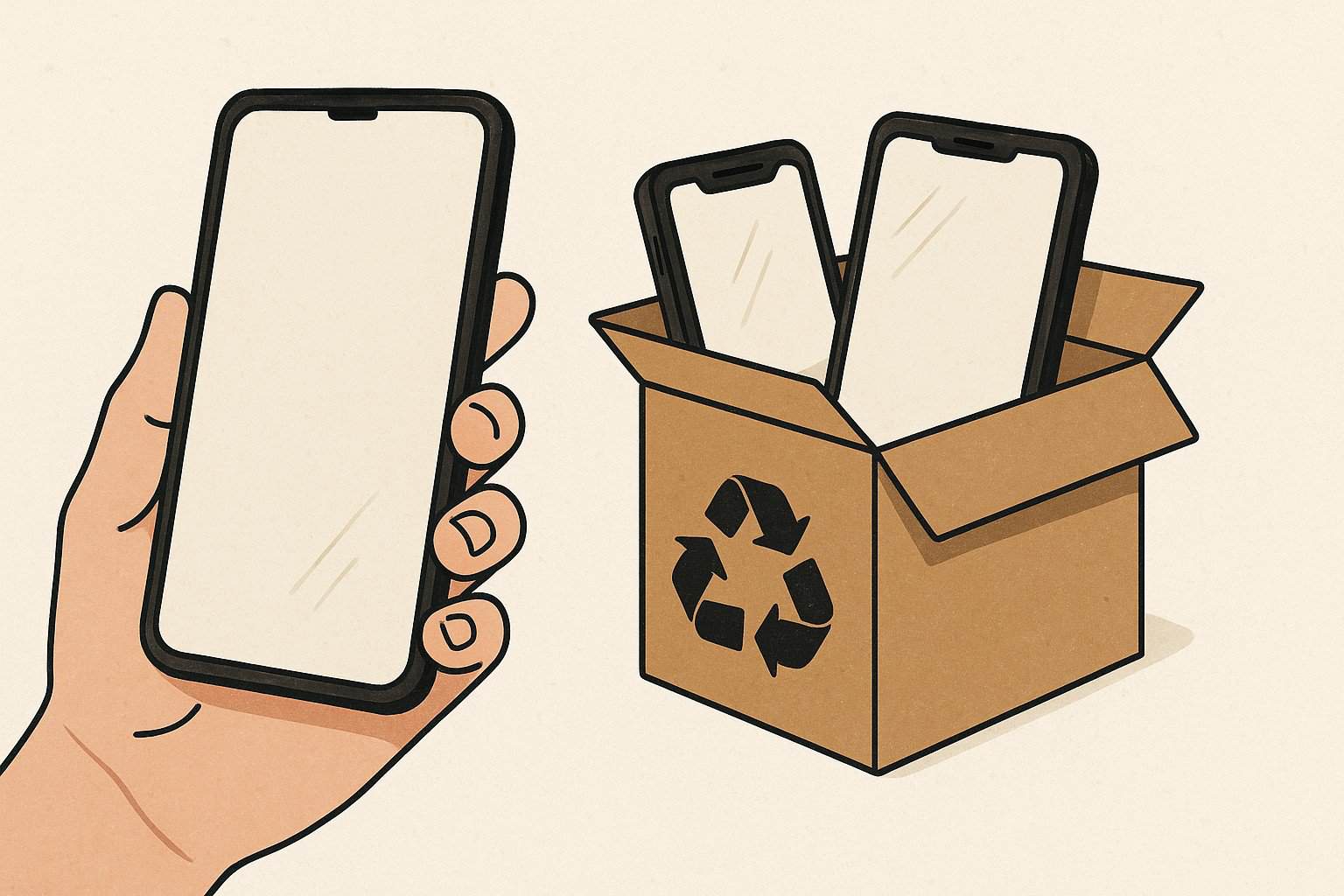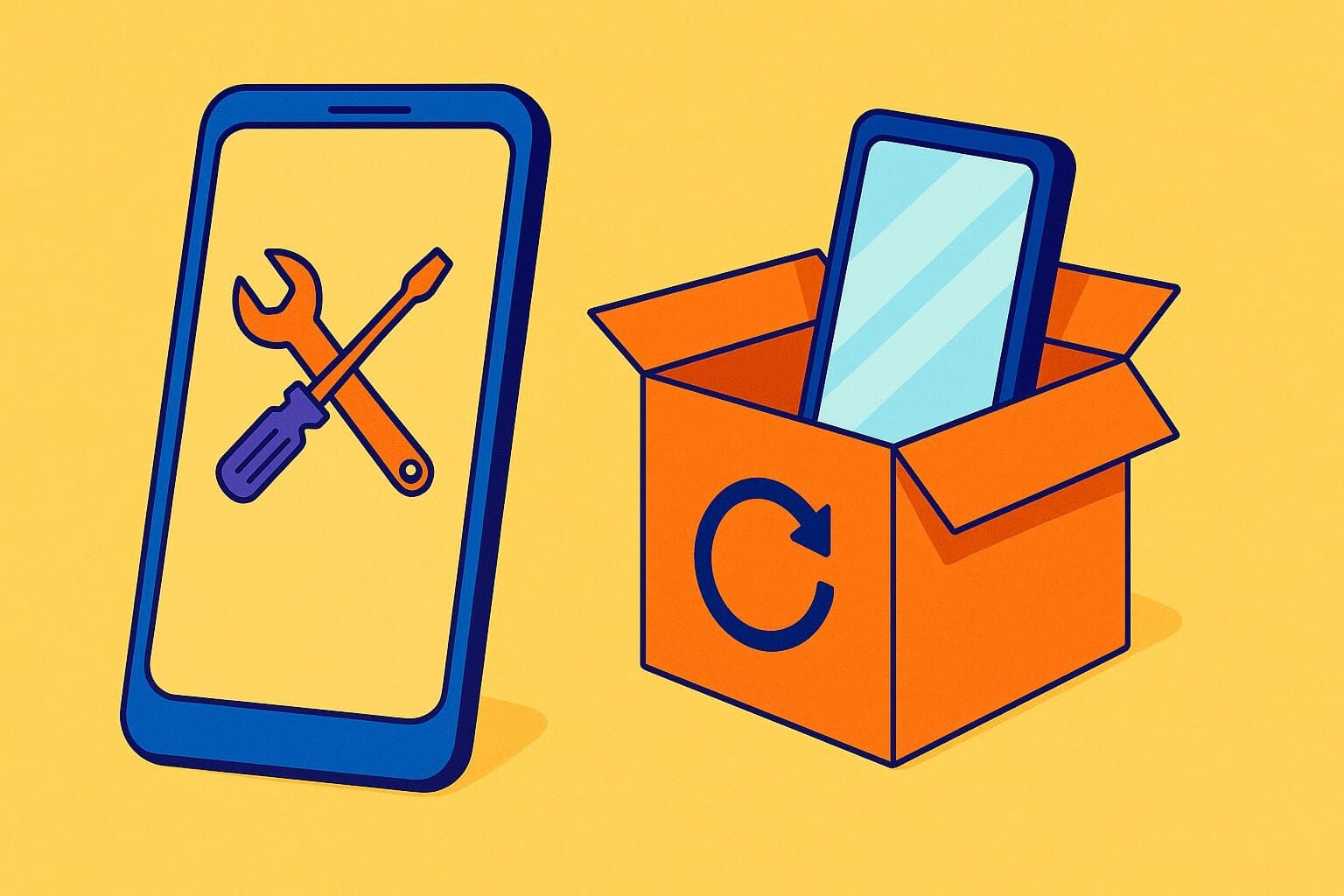Buying a refurbished phone can be a smart way to save money and get a good device. But it’s important to know what to look for before you buy. Not all refurbished phones are the same. Some might have problems or hidden issues.
In this article, we’ll share 10 important things you should think about before buying a refurbished phone. This will help you make a safe and confident choice.
Table of Contents
What Exactly Is a Refurbished Phone?
A refurbished phone is a phone that has been used before but fixed, checked, and cleaned so it works like new again. It’s not brand new, but it’s tested to make sure it works well.
For example, someone might buy a phone and return it after a few days because they didn’t like it. The company then checks the phone, fixes any problems, replaces broken parts, cleans it up, and sells it again as refurbished.
How Is It Different from Used or Secondhand Phones?
A used phone is simply a phone that someone else owned and used. It might not be tested or fixed before selling. You might get a used phone that works perfectly, but sometimes it can have issues or damage.
A secondhand phone is basically the same as a used phone — it just means it’s been owned by someone else before.
How Is It Different from a Reconditioned Phone?
The terms refurbished and reconditioned are often used to mean the same thing, but sometimes reconditioned means the phone was fixed to work but might not have been tested as thoroughly. The difference is small and depends on the seller.
How Is It Different from a Certified Pre-Owned Phone?
A certified pre-owned (CPO) phone is a type of refurbished phone. It means the phone was checked and fixed by a trusted repair team or manufacturer-approved seller. These phones usually come with a warranty and go through detailed testing.
Why Buy a Refurbished Phone?
Buying refurbished means you get a phone that works well but costs less than a brand-new one. It’s also better for the environment because it reduces electronic waste. If you want to save money without giving up quality, refurbished phones are a smart choice.
10 Points to Bear in Mind Before Buying a Refurbished Phone
1. Understand What 'Refurbished' Means
Refurbished phones are devices that were returned, repaired, or inspected to work like new. They’re different from used phones because they’ve been tested and fixed by professionals.
For example, an iPhone 15 Plus refurbished unlocked might have had a cracked screen replaced or software glitches fixed before being sold. Knowing this helps set your expectations — refurbished doesn’t mean brand new, but it should work well and offer great value.
2. Check the Seller’s Reputation
Always buy from a trustworthy seller. Look for sellers with good reviews and ratings on popular marketplaces or tech websites. A seller with many positive reviews and clear return policies is more likely to offer a quality product and good service. Avoid sellers with poor feedback or unclear descriptions.
3. Look for a Warranty or Return Policy
A warranty gives you peace of mind if something goes wrong after buying. Many refurbished phones come with at least a 90-day warranty. Also, check the return policy — can you return the phone within 14 or 30 days if you’re not satisfied? These protections are important when buying refurbished.
4. Inspect the Phone’s Physical Condition
Even though refurbished phones are repaired, some minor scratches or marks might still be visible. Ask for detailed photos or inspect the phone in person if possible. Look for cracks, dents, or screen damage.
Some sellers grade phones (like Grade A or B) based on how they look. Understanding these grades helps you know what to expect.
5. Verify Battery Health
Battery life matters. Phone batteries wear out over time and hold less charge. Ask the seller for the battery health status — this can often be seen in the phone settings.
A good refurbished phone should have battery health above 80%, or a battery that has been replaced during refurbishment.
6. Confirm the Phone is Unlocked
An unlocked phone works with any mobile carrier. If a phone is locked to one network, it might not work with your SIM card.
Always confirm the phone is unlocked, especially if you want to switch providers or use the phone while traveling.
7. Check for Original Parts vs. Replacements
Ask if the phone still has original parts or if anything has been replaced. Some refurbished phones might have new, third-party screens or batteries.
While good-quality replacement parts are fine, original parts often offer better performance and reliability. Be sure to check this before buying.
8. Ensure Software Is Updated and Genuine
The phone’s software should be official and up to date. Avoid phones with outdated or unofficial operating systems, as they may be unsafe or buggy.
Make sure the phone can receive updates for its system (Android, iOS, or others) so you stay protected and compatible with apps.
9. Ask About Included Accessories
Check what accessories come with the phone — like a charger, cable, earphones, or case. Some sellers include original accessories, while others provide third-party or none at all.
Knowing this helps you prepare for any extras you might need to buy separately.
10. Compare Price with New and Used Models
Finally, compare the price of the refurbished phone with the price of a new or used version of the same model. If the difference is small, a new phone might be worth it.
But if the refurbished phone is much cheaper and passes all quality checks, it can be an excellent deal that saves you money without losing performance.
Conclusion
Understanding what a refurbished phone really is can help you make a smart choice when buying one. These phones are fixed, tested, and ready to use — often at a much lower price than buying new.
Just remember, refurbished is not the same as used or secondhand, and terms like reconditioned or certified pre-owned can mean different things depending on the seller.
By keeping these 10 tips in mind, you can shop with confidence and get a reliable phone that fits your needs and your budget.


